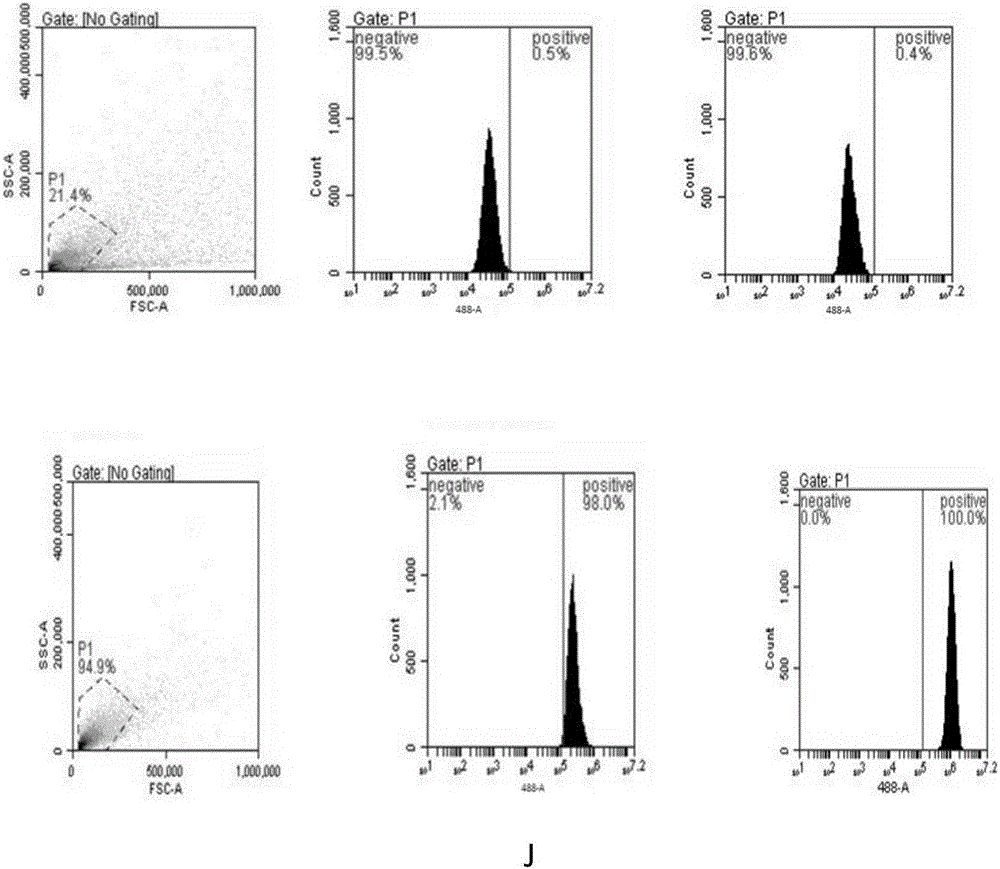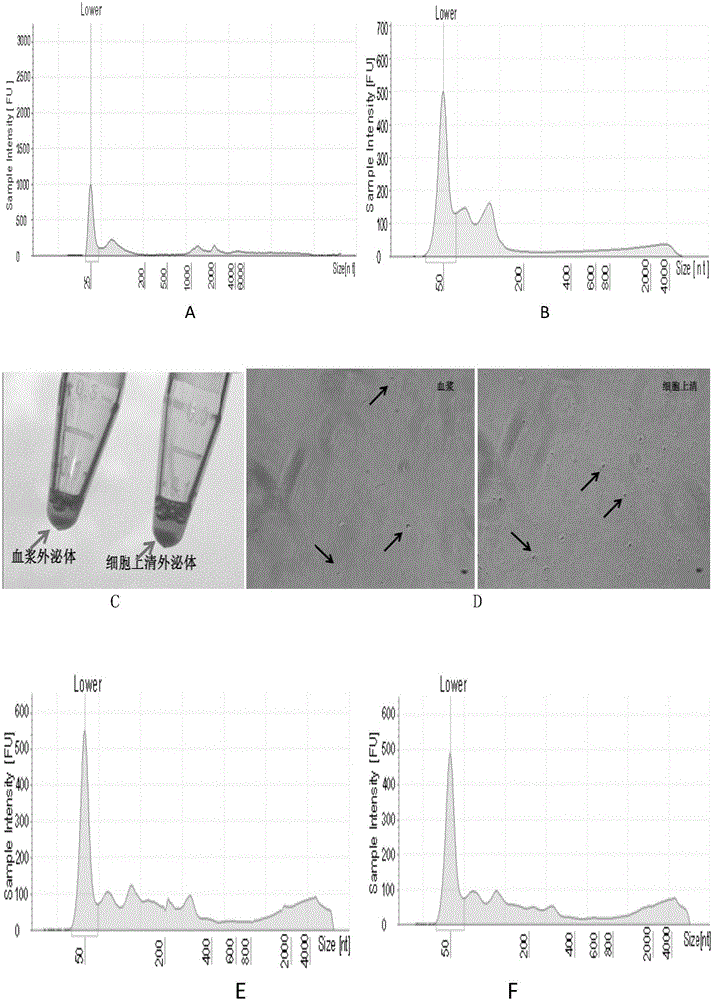Method and kit for separating exosome
A technology of reagents and body fluids, which is applied in the field of biomedicine, can solve the problems of long time consumption, large centrifugal force, and high cost, and achieve the effects of simple operation, high RNA yield, and improved yield
- Summary
- Abstract
- Description
- Claims
- Application Information
AI Technical Summary
Problems solved by technology
Method used
Image
Examples
Embodiment 1
[0086] Example 1, Molecular Weight Optimization of Hydrophilic Polymer Used in Isolation of Exosomes
[0087] 1. Sample preparation
[0088] 1. Plasma
[0089] Human peripheral blood samples were collected using EDTA anticoagulated blood collection tubes, left to stand at 4°C for 3 hours, centrifuged at 4000×g for 10 minutes, and the supernatant was taken as a plasma sample.
[0090] 2. Cell supernatant
[0091] Using DMEM medium (containing 10% exosome-depleted FBS), at 37 °C and 5% CO 2 The 3T3 cells were cultured under culture conditions, and after 2 days of normal culture, the cell supernatant samples were collected (centrifuged at 1000 rpm for 2 minutes).
[0092]2. Configure exosome separation solution
[0093] Use hydrophilic polymers PEG8000, PEG10000, PEG20000, dextran sulfate 50000, dextran sulfate 40000, PVP25000 and PVP40000 to dissolve in water to prepare exosome separation liquid storage solution as follows: PEG8000 aqueous solution with a concentration of 20...
Embodiment 2
[0125] Example 2, optimization of the concentration of hydrophilic polymer used for isolating exosomes
[0126] 1. Sample preparation
[0127] 1. Plasma: same as Example 1;
[0128] 2. Cell supernatant: the same method as in Example 1, except that the cells are A549;
[0129] 2. Configure exosome separation solution
[0130] Since Example 1 found out that hydrophilic polymers PEG8000, PEG20000, dextran sulfate 40000, PVP25000 and PVP40000 are effective exosome separation liquids, the exosome separation liquid storage liquid prepared by dissolving in water is as follows:
[0131] Exosome separation fluid for plasma separation: PEG8000 aqueous solution with a concentration of 400mg / ml, dextran sulfate 40000 with a concentration of 400mg / ml, and PVP25000 with a concentration of 400mg / ml;
[0132] Exosome separation fluid for cell supernatant separation: PEG20000 at a concentration of 400mg / ml, dextran sulfate 40000 at a concentration of 400mg / ml, and PVP40000 at a concentratio...
Embodiment 3
[0152] Example 3, the use of hydrophilic polymers in combination to separate exosomes
[0153] 1. Sample preparation
[0154] 1. Plasma: same as Example 1;
[0155] 2. Cell supernatant: the same method as in Example 1, except that the cells are Hela;
[0156] 2. Configure exosome separation solution
[0157] Since Example 2 finds out that the best hydrophilic polymers for separating plasma exosomes are PEG8000 and PVP25000, and the best hydrophilic polymers for separating cell supernatant exosomes are PEG20000 and dextran sulfate 40000, therefore, it is possible Two kinds of hydrophilic polymers were mixed to prepare exosome separation fluid storage solution, as follows:
[0158] Exosome separation liquid for plasma separation: PEG8000 aqueous solution with a concentration of 300mg / ml, PVP25000 with a concentration of 300mg / ml;
[0159] Exosome separation fluid for cell supernatant separation: PEG20000 at a concentration of 300mg / ml, and dextran sulfate 40000 at a concentr...
PUM
| Property | Measurement | Unit |
|---|---|---|
| Particle size | aaaaa | aaaaa |
Abstract
Description
Claims
Application Information
 Login to View More
Login to View More - R&D
- Intellectual Property
- Life Sciences
- Materials
- Tech Scout
- Unparalleled Data Quality
- Higher Quality Content
- 60% Fewer Hallucinations
Browse by: Latest US Patents, China's latest patents, Technical Efficacy Thesaurus, Application Domain, Technology Topic, Popular Technical Reports.
© 2025 PatSnap. All rights reserved.Legal|Privacy policy|Modern Slavery Act Transparency Statement|Sitemap|About US| Contact US: help@patsnap.com



